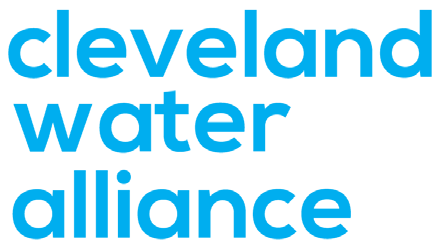Tomorrow’s world – what does the future hold?
As my 4-year-old niece pronounced on a Zoom call earlier this week, “Aunty, the world is different now”. Indeed it is: governments around the world are announcing bailouts; venturing to the supermarket is considered an extreme sport; and as a meme sent by a friend put it, “I now await the UK Government’s Daily Briefing as I used to wait for Love Island.”
Many countries are starting to ease their lockdowns. Spain and Italy have allowed their citizens out for exercise; Germany is reopening shops; Ireland has announced a five-phase lockdown easing plan; and on Sunday, Boris Johnson is set to announce how the UK will lift restrictions. But what does tomorrow’s world hold? At OCO, we help governments and companies to understand futures. That means learning how sectors and markets are changing and how they need to adapt to maintain their competitiveness.
I’ve spoken to many people in the last few weeks – companies, clients and friends, and the prevailing question is what happens next? The “new normal” is of course dependent on how long the COVID-19 crisis lasts, but here are some of our thoughts on 5 new futures to consider:
- The future of Wellbeing
Whilst all countries are trying to stop a second outbreak, history shows that we are likely to see multiple waves of the disease. Singapore, Germany and Hubei province in China are all reporting increasing case numbers which may require a repeat of social distancing measures. Staying healthy may involve the following:
- Prepare for your fortnightly COVID-19 test which will give you clearance for circulation in society. Global demand will result in a 13% growth for the Diagnostics sector, as orders of testing kits will become as routine as purchasing paracetamol. More convenient testing approaches are being introduced all the time. For example, last month, BioIQ, an Atlanta-based healthcare firm announced a new, FDA-approved saliva test for COVID-19, an alternative to the nasal swab.
- Look out for medical wearables this winter, including the snood mask, equipped with an antiviral coating. UK based company Virustatic Shield, recently announced plans to scale up production to a million a week. Similarly, Ava, a Swiss medical bracelet manufacturer, which makes a device that tracks women’s fertility, is partnering with the Lichenstein government for a COVID-19 early detection program. In the initial phase, Ava will provide bracelets to 2,000 individuals and monitor them for potential coronavirus symptoms.
- Use of healthtech looks set to rise. Prepare for treatment from the medibot – a robotic healthcare assistant. Doctors in the US and Asia are already treating coronavirus patients with robots, equipped with a stethoscope. The robot helps doctors to take the patient’s vitals and communicates through a large screen. Telemedicine is also facing an unprecedented uplift in demand. In the US, appointments via PlushCare are up by 70%, whilst Amwell, another service, saw an increase of 158% in app use since January. Your own IT skills will likely be called into action to register for your online health record so that professionals can share test results with you.
- Finally, mindfulness will become a mainstream activity, with a projected growth of 2% across the sector this year. Apple’s App Store is currently featuring a Guided Meditation section on its homepage and Calm, an app focused on meditation, is the most downloaded health and fitness app. Fiction book sales have climbed by a third in the UK and sales of sewing accessories at Liberty London have quadrupled, as we turn to reading, crafting and sewing to ease our anxieties.
- The future of Leisure & Retail
The physical leisure and retail industries have been hard hit by COVID-19. Consumer and Retail has suffered a 24% decrease in FDI projects compared to the same period last year. In its place, look out for the rise of the Homebody Economy. The term coined by Vox, was used to describe the surprising trend identified by the US Bureau of Labour Statistics, that millennials spend 70% more time at home than the general population. Homebody life it seems is now the norm, so expect the following:
- Surges in OTT (Over The Top) and streaming services will Uptake of platforms such as Netflix and Amazon Prime have soared and are expected to grow at a CAGR of 14.55% over the next 7 years. New players such as NBC, HBO, Apple and Disney continue to enter the market. This could drive subscription costs down as providers compete for our attention and simultaneously accelerate new content and innovations. For example, Disney skipped the cinemas and released Frozen 2 to its Disney+ platform early; BBC have licensed their old catalogue to beef-up available content; and lockdown has seen the launch of Netflix Party, a free Chrome extension that sets up a chat room and synchronizes the video for everyone watching. Furthermore, look out for the rise of digital actors, as the studios look to the VFX artists to create virtual substitutes. 3D actors have been with us for a while – a synthetic Laurence Olivier co-starred in Sky Captain and the World of Tomorrow, and the Star Wars film, Rogue One, digitally recreated Peter Cushing in the role Grand Moff Tarkin and Carrie Fisher as Princess Leia.
- Growth in gaming and e-sports will endure. A recent Verizon study highlighted a 115% increase in gaming usage in the US alone compared to a typical day before COVID-19, and many platforms have cited records in concurrent player counts. Whilst e-sports aren’t everyone’s cup of tea, sporting bodies will adopt a blend of live and virtual. More than 4.8m viewers watched virtual horse Potters Corner win a computer simulation of the Grand National on ITV this month; and Spain’s La Liga drew in over a million for their FIFA 20 Challenge esports tournament. And when physical sports do return, look out for virtual crowds which will help to simulate atmospheres in the stadia. This week, Borussia Monchengladbach fans have ordered more than 8,000 cardboard cutouts of themselves to fill their stadium if the Bundesliga returns behind closed doors.
- E-commerce has been the biggest lockdown winner. Amazon has reported an increase of 28% in Prime subscriptions revenue, and customers are spending nearly £9,000 a second on its products and services. Sales of bread machines and home gym equipment have increased by more than 600% and 300% respectively. But Amazon’s retail ambitions don’t stop in the virtual world. The company’s “Just Walk Out” technology, first deployed in their Seattle Go Grocery store, and allows customers to grab and go, is now on offer to other retailers. When we do return to the high street, prepare for contactless shopping, where shoppers scan QR codes, pay using digital currency and have items shipped directly to their homes.
- And the swift half will return, but not as we used to know it. Pubs have been rocked by COVID-19. Get set for a more refined drinking experience. Booking in advance is a must. Collect your drinking number when you first enter a venue, order via an app, and then receive an alert telling you when you can pick up your food or drinks. All whilst sitting a safe distance away from fellow revellers. Pub-tech could well be a new phenomenon as app companies cash in on how to integrate paying for refreshments with the ordering and queuing system. Maybe they will help us settle the debate on whose round it is too.
- The future of Work (& School!)
COVID-19 has accelerated the trend in virtual working and learning. According to app tracking firm Apptopia, Zoom was downloaded 2.13m times around the world on 23 March, the day the lockdown was announced in the UK– up from 56,000 a day two months earlier. Remote life looks set to stick, so here’s what we could expect:
- For the service and white-collar industries, virtual meetings and remote working will continue. A Gartner survey of CFOs highlighted that nearly 20% of those surveyed expect at least 20% of their workforce who previously worked in company offices will become permanent work-from-home employees after the pandemic ends. And for those that do venture into the workplace, prepare for the awkward greetings– do we hug? Can we shake hands? The elbow bump may be here to stay.
- Look out for more blended educational experiences, with younger learners returning to the classroom, and older students combining ed-tech with face to face learning. Equally, we can expect to see more partnerships to support education. In Hong Kong, readtogether.hk forum is a consortium of organizations across industries –publishers, media and entertainment. Collectively, they are providing over 900 educational assets, including videos, book chapters and assessment tools for free. Similarly, media organizations such as the BBC are also supporting virtual learning by using celebrities like Manchester City footballer Sergio Aguero to teach some of the content.
- Finally, for the on-site workers, prepare for the rise in robotics and drones. Companies large and small are expanding how they use robots to increase social distancing and reduce the number of staff that have to physically come to work. In the first instance, look out for robot usage in high risk tasks, for example, MTR Corp., the Hong Kong subway system, is using robots to disinfect rail cars; and Antwork, a drone company is transporting medical supplies between hospitals and testing centres. This may expand to factories, fruit picking and even public transport.
- The future of Security
As a former advisor to the CIA noted, nuclear war was the great fear of the modern world and our institutions were built to respond to such threats. But COVID-19 has shown the world’s defence experts that we were blind. Ensuring our safety will necessarily require ongoing curtailment of our personal freedoms and invasion of our privacy. Look out for the following…
- Prepared to be surveilled. Passing through thermal imaging sensors and applying hand sanitizer as you enter any building will be the norm. As virus transmission starts to subside, we can expect governments to be more directive in monitoring citizens for public health need. In Singapore, new regulations stipulate that employers must take the body temperature of every individual entering the workplace and obtain and keep the contact particulars of every individual entering the workplace to enable contact tracing to take place.
- Similarly, contact tracing is the phrase for 2020. According to Linklaters, 28 countries have launched official contact tracing apps as a tool to reduce the spread of the virus. Asia leads the way with 13 apps deployed by national governments. But these tools raise a range of privacy and data protection issues. A South Korean professor at Dongseo University, reported a couple allegedly engaged in an affair were found by people looking at data collected through the government’s tracing app.
- Digital identity cards, badges or passports could become a reality. Microsoft’s co-founder Bill Gates has already called for the use of digital identity to support lockdown exit strategies, via digital certificates to indicate who has been tested, recovered, or been administered with any eventual vaccine. With vaccine supplies limited to begin with, verification that each dose has reached a real patient will allow us to return to normality. But with this need for confirmation, be prepared for increased cybercrime, fraud and digital identity theft, as hackers look to trade immunity passports on the Dark Web.
- The future of Transport
The transport and travel industries have been the biggest losers in the pandemic. In April, the International Air Transport Association reported that the COVID-19 crisis will see airline passenger revenues drop by $314 billion in 2020, a 55% decline compared to 2019. However, the lockdown has delivered a fall in carbon emissions. Levels of pollution in New York have reduced by nearly 50% as compared with this time next year, while in China, emissions fell 25% at the start of the year. Will we ever travel as we did? Here’s our take on some of the possibilities:
- Rush hour will become a moderately busy hour, facilitated by a rise in home working and fears of virus spreading in crammed buses and trains. Chief executives of companies such as Barclays and WPP are supporting the end of crowded city centre offices and rush hours, as flexible working becomes the new normal, and this move could be further strengthened as governments ask firms to stagger shift start times and introduce weekend working to avoid a rush-hour surge in people travelling to work once the coronavirus lockdown is lifted.
- Prepare for an expansion of cycle and pedestrian routes. Milan, New York, Sydney and Bogota have all announced plans for new bike lanes to respond to public preferences for open air commuting options. Your personal hygiene will become part of you uber rating and your driver will be rated on their cleanliness and asked to share the date of their last COVID-19 test as part of their profile.
- The tourism industry will struggle, with travellers cautious of destinations with poor hygiene and poor public health enforcement. Comparison sites will start to grade operators on their sanitation and connectivity with quality healthcare facilities in the event of further waves of the virus. Emirates has already introduced pre-boarding blood tests and AirAsia recently unveiled new cabin-crew uniforms consisting of masks, visors and protective suits. Travel will still occur, but holidays will be less frequent and closer to home. You’ll need more than a passport when you arrive at your destination. And more than anything, air travel will be expensive, as carriers struggle with the economics of carrying fewer passengers. The return of the subsidised national carrier may well be on the cards, but only if it is powered by renewable fuels – maybe the green economy is on the horizon.
Governments face the difficult challenge over the next few months of deciding where to intervene; who to help; and who to allow to fail. Deciding what steps to take is dependent on good data, company insight and imagination – the 3 key core components of OCO’s Futures Team. For more information and support on anticipating what the future holds and how you can remain competitive, drop us a line and see if we can help you imagine the possibilities for tomorrow’s world.
![]() We will also be running a regular audio broadcast of market and insight updates over the coming weeks to keep our followers up to speed on developments. To register your interest please click HERE and we will ensure you are notified.
We will also be running a regular audio broadcast of market and insight updates over the coming weeks to keep our followers up to speed on developments. To register your interest please click HERE and we will ensure you are notified.
ORGANIZATIONS USING OCO CONNECT








